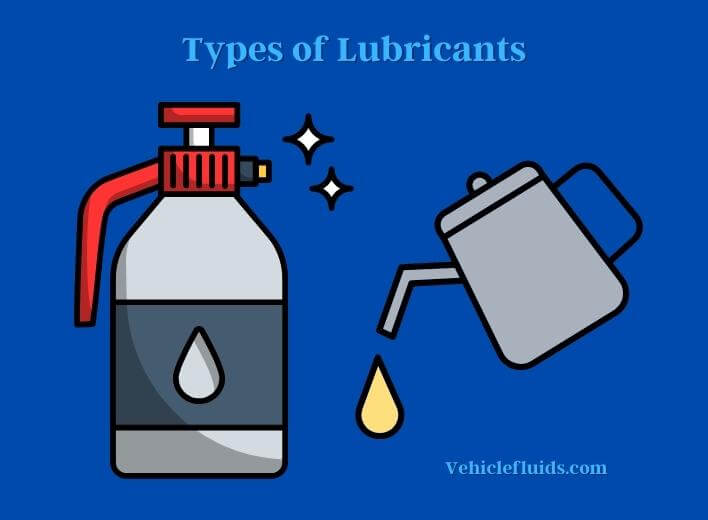Machinery and equipment are critical to many industries, from manufacturing and construction to transportation and agriculture. Whether you’re running a small business or managing a large industrial operation, keeping your equipment running smoothly is essential to your success. Lubricants play a vital role in achieving this goal.

Lubricants are substances used to reduce friction and wear between surfaces in contact, allowing machinery to operate efficiently and last longer. Without proper lubrication, machinery can quickly break down, leading to costly repairs and downtime. Lubricants come in various forms, including oils, greases, and solid lubricants, and each type has its advantages and disadvantages.
Lubricants
Lubricants are substances that are used to reduce friction between two surfaces in contact with each other. They are typically liquids or semi-liquids that are applied to surfaces to create a thin layer that helps to reduce friction and wear. Lubricants can also help to dissipate heat and reduce the risk of corrosion or damage to the surfaces they are applied to. They are commonly used in a variety of applications, including machinery, automotive engines, and industrial equipment, to help maintain optimal performance and extend the lifespan of components.
Types of Lubricants
Lubricants come in various forms, each with its unique properties and benefits. The three primary types of lubricants are liquid lubricants, solid lubricants, and greases.

Liquid Lubricants
Liquid lubricants are the most common type of lubricant and are typically used in high-speed and high-temperature applications. Mineral oils are the most common type of liquid lubricant and are derived from crude oil. They are inexpensive, readily available, and work well in many applications.
Synthetic oils are another type of liquid lubricant and are made from chemical compounds rather than crude oil. They offer better performance than mineral oils in extreme temperatures, pressures, and speeds. Bio-based oils are a newer type of liquid lubricant made from plant-based materials, making them environmentally friendly. They can provide comparable performance to mineral and synthetic oils in some applications.
Solid Lubricants
Solid lubricants are used in applications where liquid lubricants are not suitable, such as high-temperature and high-pressure environments. Solid lubricants are materials that have low shear strength and can be easily sheared between two surfaces, providing lubrication. Some common solid lubricants include graphite, molybdenum disulfide, and PTFE (polytetrafluoroethylene).
Graphite is commonly used as a lubricant in high-temperature applications, such as furnace conveyors. Molybdenum disulfide is often used in extreme-pressure and high-temperature applications, such as in aircraft engines. PTFE is commonly used in low-friction applications, such as bearings and seals.
Greases
Greases are a mixture of a liquid lubricant and a thickener, such as lithium or calcium soap. The thickener acts as a sponge, holding the liquid lubricant in place and providing lubrication over an extended period. Greases are typically used in applications where liquid lubricants are not suitable, such as high-pressure or low-speed applications.
Greases offer several advantages over liquid lubricants, such as reduced leakage and better sealing properties. However, they also have some disadvantages, such as reduced heat transfer and increased friction in some applications.
Functions of Lubricants
Lubricants serve several critical functions in machinery and equipment, including reducing friction and wear between surfaces, protecting against corrosion, and improving efficiency.
Reducing Friction and Wear
One of the primary functions of lubricants is to reduce friction and wear between moving surfaces. When two surfaces come into contact, friction can cause them to wear down quickly, leading to equipment failure.
Lubricants reduce friction by creating a barrier between surfaces, allowing them to slide over each other smoothly. The lubricant fills in any gaps between the surfaces, reducing metal-to-metal contact and preventing wear.
Protecting Against Corrosion
Lubricants also protect machinery against corrosion, which can occur when moisture and oxygen come into contact with metal surfaces. Corrosion can weaken the metal, leading to equipment failure.
Lubricants create a protective layer on metal surfaces, preventing moisture and oxygen from coming into contact with the metal and reducing the risk of corrosion.
Improving Efficiency
Lubricants can also improve the efficiency of machinery and equipment by reducing energy losses due to friction. When surfaces are well-lubricated, they require less energy to move, which can result in significant energy savings.
Proper lubrication can also reduce the amount of heat generated by moving parts, improving energy efficiency and reducing the risk of overheating.
Factors to Consider When Choosing Lubricants
Choosing the right lubricant for your machinery and equipment is essential for ensuring optimal performance and longevity. Here are some factors to consider when selecting a lubricant:
Operating Conditions
The operating conditions of your machinery and equipment are one of the most critical factors to consider when selecting a lubricant. Factors to consider include temperature, pressure, speed, and load.
For example, high-temperature applications require lubricants that can withstand the heat without breaking down, while high-pressure applications require lubricants that can maintain their viscosity under pressure.
Compatibility
Compatibility is another important factor to consider when selecting a lubricant. The lubricant must be compatible with the materials used in your machinery and equipment, including seals, gaskets, and hoses. Using an incompatible lubricant can lead to equipment failure and costly repairs.
Type of Lubricant
As discussed earlier, there are different types of lubricants, including liquid lubricants, solid lubricants, and greases. The type of lubricant you choose depends on the application and operating conditions of your machinery and equipment.
Environmental Considerations
Environmental considerations, such as regulations and sustainability, should also be considered when selecting a lubricant. For example, some lubricants may contain harmful chemicals that can harm the environment, and it is essential to choose a lubricant that is safe for use.
Cost
The cost of the lubricant is another important factor to consider. While choosing a less expensive lubricant may be tempting, balancing cost with performance and longevity is essential. Choosing a high-quality lubricant may cost more upfront, but it can result in significant savings over the long term by reducing the need for repairs and maintenance.
Lubricant Maintenance and Management
Proper maintenance and management of lubricants are essential for ensuring optimal performance and longevity of machinery and equipment. Here are some best practices for lubricant maintenance and management:
Regular Oil Analysis
Regular oil analysis is an essential part of lubricant maintenance and management. Oil analysis involves taking a sample of the lubricant and testing it for various contaminants, such as metal particles, water, and dirt. By monitoring the condition of the lubricant through oil analysis, you can identify potential issues before they lead to equipment failure.
Proper Storage
Proper storage of lubricants is essential for maintaining their quality and performance. Lubricants should be stored in a cool, dry, and clean area, away from direct sunlight and heat sources. Lubricants should also be stored in sealed containers to prevent contamination.
Proper Handling
Proper handling of lubricants is also essential for maintaining their quality and performance. When adding lubricant to machinery and equipment, it is important to use clean tools and avoid introducing contaminants into the lubricant. Lubricants should also be added in the correct quantity and at the recommended intervals.
Regular Maintenance
Regular maintenance of machinery and equipment is essential for ensuring optimal performance and longevity. This includes checking and replacing filters, inspecting seals and hoses, and performing any necessary repairs.
Record Keeping
Keeping detailed records of lubricant use and maintenance is essential for effective lubricant management. This includes recording the type of lubricant used, the quantity, and the date it was added. It also includes keeping records of oil analysis results and any maintenance or repairs performed.
If you want to know about high-mileage oil: How it keeps your engine running like new, read the article for details.
Conclusion
Lubricants play a critical role in ensuring the optimal performance and longevity of machinery and equipment. They reduce friction, dissipate heat, and protect against wear and tear. Choosing the right lubricant requires consideration of factors such as operating conditions, compatibility, type of lubricant, environmental considerations, and cost.
Proper maintenance and management of lubricants are also crucial for ensuring optimal performance and longevity. This includes regular oil analysis, proper storage and handling, regular maintenance of machinery and equipment, and keeping detailed records of lubricant use and maintenance.
Remember that using high-quality lubricants and following best practices for maintenance and management can result in significant cost savings over the long term.
